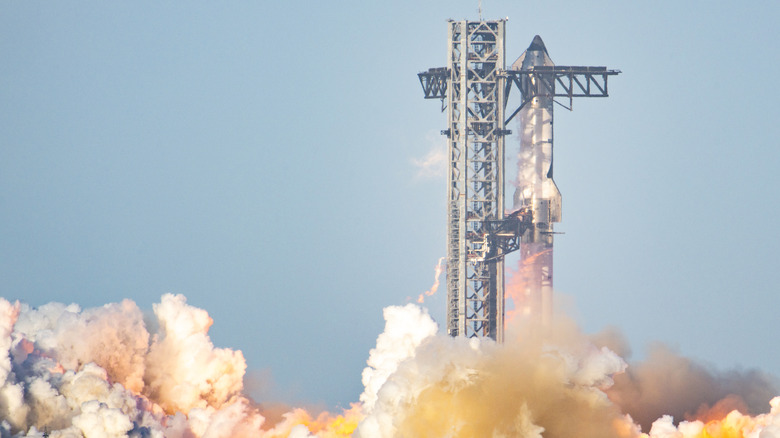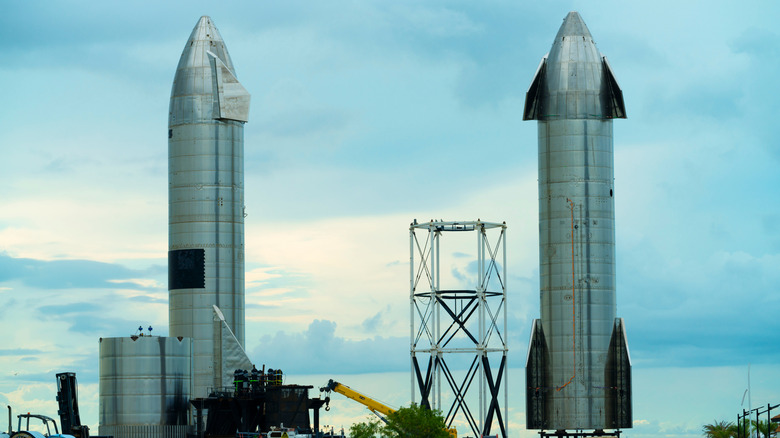Starship Test Fire Marks Major Milestone In SpaceX's Lead Up To Flight 11
SpaceX has endured many setbacks along the road to perfecting Starship, the biggest rocket ever made. But the rocket has now passed what is possibly the final technical test before attempting to launch the eleventh flight of the stainless steel engineering marvel. On September 22, 2025, SpaceX was able to ignite all six Raptor engines on the upper stage of the spacecraft, while the vehicle stayed attached to its pad at Starbase in South Texas. Although the static fire only lasted a few seconds, it indicates that the avionics, engines, and fuel systems are ready for the stress of launch.
The two parts of the rocket have now passed their preflight tests, and while it may be too early to jump to conclusions, there's a good chance that means the big rocket could potentially launch in the next few days or weeks. The schedule is a whole different story, though, with the unpredictability of the weather, the readiness of the technology, and getting permission from the government all being deciding factors.
There is more to this mission than first meets the eye. Elon Musk sees Starship as the key to his plans to colonize Mars, with audacious plans to start launching uncrewed cargo missions in the second half of this decade. NASA is also dependent on its success, having hired a modified version of Starship to land astronauts on the Moon as part of its Artemis program. Now, every successful test is a step forward not just for SpaceX, but for the whole U.S. space program.
A step in the right direction
SpaceX has been here before, and not always with good results. More than one Starship test flight has gone wrong in 2025, ending in flames or the loss of the vehicle. The program lost some of its credibility, especially since NASA had to change the Artemis timeline to make up for SpaceX's delays. But Flight 10, which took off on August 26, changed the mood. The Super Heavy booster and Starship upper stage both landed in their planned areas during that mission. For the first time, the upper stage also sent a set of fake payloads into orbit.
Thanks to that small victory, Flight 11 will be more than just another test. It's a chance to show that August's success wasn't a one-time thing and to hopefully boost people's faith in the rocket's abilities. This is also the last flight of the current version of the Starship, "Version 2." SpaceX will then move on to Version 3, which Musk has said is even bigger and better. This vehicle will be able to start sending cargo to Mars as early as 2026 if the campaign stays on track.
How well SpaceX does has a direct effect on NASA's own goals. The first crewed lunar landing attempt, Artemis III, has been pushed back to at least 2027. Safety experts have also warned that the technology for refueling, which is crucial for missions to deep space, is still unproven. The timeline for America's return to the Moon and SpaceX's goals will depend on the success of Flight 11.
Why the static fire matters
To the regular person, a static fire may seem like more of a noisy rehearsal than a milestone breakthrough. In reality, trials like this are crucial for testing the integrity of fuel lines, pumps, sensors, and software in a way that could never be done through ground simulations. For a machine as colossal as the Starship, even a few seconds of data are invaluable for engineers.
The completed test confirms that Starship's engines are healthy and its systems can withstand ignition, a positive sign for what is a crucial flight for SpaceX. If it succeeds, it's a major leap forward for Musk's greater plans for Mars. If it fails, SpaceX risks adding months of delay to a schedule that's already come under some serious scrutiny. Either way, the static fire has set the stage for one of the most closely watched rocket launches of the year, one with implications stretching from the Moon to Mars.


